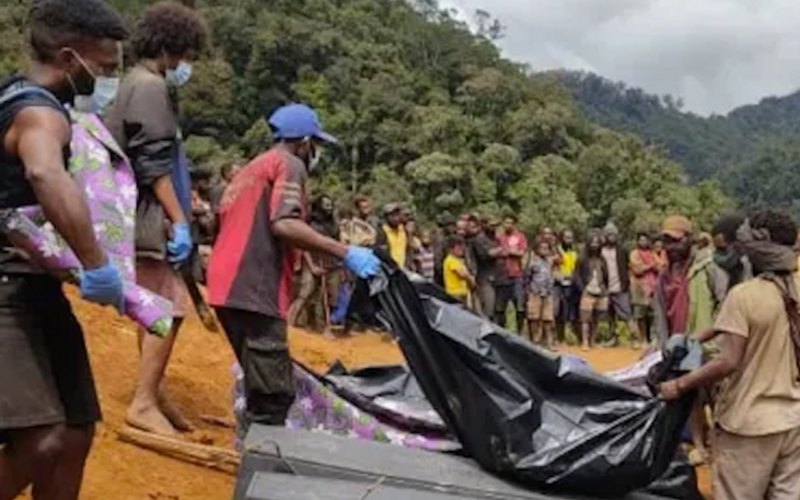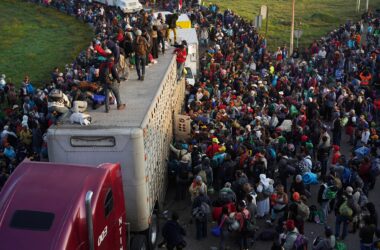The United Nations has issued a warning about a “significant” risk of disease outbreak in Papua New Guinea after a devastating landslide contaminated the region’s water sources. The landslide, which occurred recently, has turned a 600-meter-long area into a graveyard for an undetermined number of victims.
According to a rapid assessment report by the UN’s International Organization for Migration (IOM), the creeks flowing from the landslide debris are now contaminated, posing severe health risks. The report highlighted the lack of methods to treat the water, raising concerns about potential outbreaks of diseases such as diarrhea and malaria.
For much of the past week, residents of affected villages have been digging through the massive volume of earth in search of their buried relatives. Witnesses have reported an overwhelming stench of decomposing bodies, indicating the severity of the situation.
Enga province disaster committee chairman Sandis Tsaka told Reuters that no survivors are expected to be found under the debris at this stage, and the focus has shifted to recovering human remains. Officials and rescuers have so far recovered 11 bodies, with two people having been rescued three days after the landslide.
Estimates of the death toll vary significantly. The Papua New Guinea government suggested that more than 2,000 people might have been buried alive, while a UN estimate put the number at about 670. A local businessman and former official estimated the death toll to be closer to 160.
The IOM has identified providing clean water, purification tablets, and lifesaving food supplies as top priorities. However, delivering aid has been challenging due to treacherous mountain terrain, a damaged bridge on the main road, and ongoing tribal unrest.
Tsaka noted that it has not been possible to deploy heavy machinery, engineers, or technical experts to the site due to the risk of further land movement. The situation is further complicated by unreliable estimates of the number of dead, injured, and displaced, which hinder effective planning and delivery of humanitarian assistance.
Satellite imagery experts, disaster relief professionals, and local officials have all indicated that the initial estimate of 2,000 deaths is likely inflated. Tsaka revised the probable number of deaths to be in the “hundreds” rather than thousands, attributing the confusion to the trauma experienced by survivors, which has made it difficult for them to provide accurate information about missing loved ones.
Despite the challenges, Papua New Guinea’s response workers are continuing their efforts, with Tsaka expressing determination to “keep our heads above water” as they navigate the complex and demanding situation.








